How do I write a blog business plan?
Writing a blog business plan should be completed before you start building your blog. The benefits of writing a blog business plan give you a roadmap to success by setting you up with a plan of action and step-by-step instructions that will help you keep your focus on your short-term and long-term goals. Creating a business plan allows you to develop meaningful mission statements, vision statements, and helps you identify your brand’s values & ethics.
Writing a blog business plan also allows you to better understand your key target market. After completing the activities listed on this page, you will have a better understanding of the industry niche you focused on. You will have completed the homework for keywords, buyer personas, and a content strategy with a list of articles you can create to get started. You will also have created a monthly budget, along with a realistic timeline for completing goals and achieving an ROI (return of investment) on your blog.
Company Purpose
“Why do I exist?”
Life’s essential question.
What is a company purpose?
A company purpose identifies how your organization benefits your community. Of course, the idea of any business is to generate income; the company purpose allows you to identify how your product/service/publication will benefit humanity. It allows you to develop an identity, set goals, and establish your company’s values and goals.
Mission Statement
Vision Statement
Values
Objective
Define a clear objective.
What is an objective?
- Define long-term goals
- Identify the economic impact you’d like to have on your community
- How will your business interact with society, and impact the individuals that encounter your praetorship?
- How will you impact your local community, and how will you impact Earth?
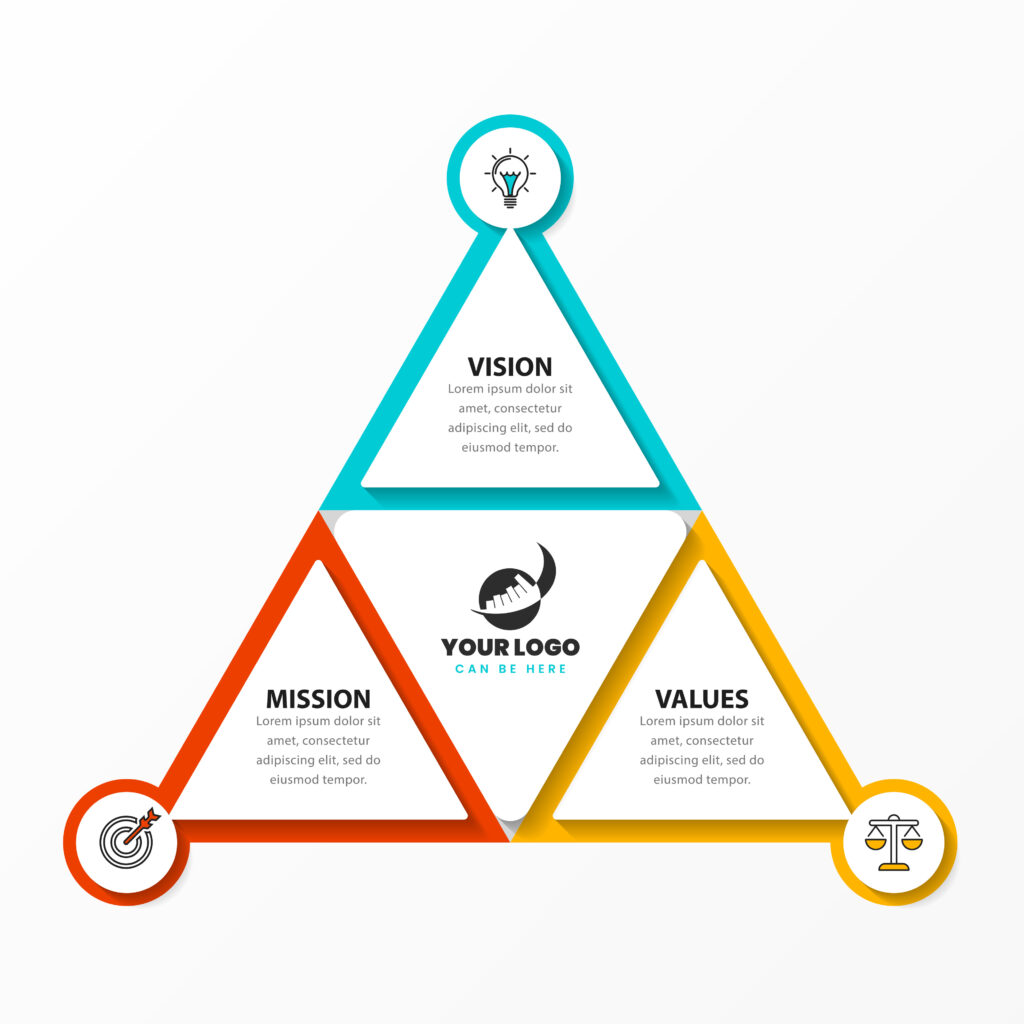
Mission Statement
What is a blog business plan mission statement?
A mission statement is a single sentence that sums up your blog’s purpose. A mission statement identifies the your activities and how they will benefit your community.
Mission statements allow your organization’s top priorities to align with the direction you are taking your company.
When writing your mission statement, jot down your company’s goals, values, and objectives.
- Identify your mission for 2024 – beyond
- Who will you help?
- How will you help them?
After you have a better understanding of your goals, values, and objectives, simplify that information into a single sentence containing the above information.
Vision Statement
Identify your long-term goals.
- Where are you going?
- How will you get there?
- What will you do when you get there?
- How is your business identity different from others in your industry, and what makes your company unique?
- How will your business help your target market?
After answering the above questions, summarize your vision statement in 1-2 sentences
Goals
Short Term Goals
What are examples of short-term goals?
Short term goals may include daily goals, such as completing a specific task.
- Completing a specific task
- Time – How much time should you spend on a certainly task every day?
- How many articles can you write daily or weekly?
- How many cold-calls should you complete daily or weekly?
- Not doing a specific bad habit , one day at a time.
- How many miles should you walk daily?
- How long should you exercise for every week?
- How much money can you put into savings every week?
Long Term Goals
Identify your long term goals.
Each long-term goal should be accompanied by 3 short-term goals, and how the short term goals will achieve the long-term goal.

Budget
The best part about starting a niche blog is the monthly expenses are relatively low. Hosting costs can be as low as $35 / first year. I wouldn’t recommend using a $35 service because it can be laggy and slow, however HostGator will give the first year for roughly $85/ 1st year. After the first year, the price will vary based on the plan you select.
Additional costs in developing a successful WordPress Niche Blog include:
- Page Builders – Elementor Pro $49/year (This blog is built with Elementor Pro)
- Stock Photos – You can find a lot of stock photos for free, however if you want high quality graphics and vector images for Adobe Illustrator, you can expect to pay between $19/month to $65 per image, based on the type of commercial license. Most stock images only require a 1 time license, and you can find plans that allow unlimited downloads, or you can sign up for ADOBE for $29.99 / month for 10 assets of high quality vector images. Another great program to use for Stock Photos and Stock Video include ENVATO ELEMENTS. Envato / Theme Forest is a great company to get high quality unlimited downloads for stock photos, along with high quality WordPress Themes & Plugins. This WordPress Premium Blog was built with X THEME from Theme Forest.
- Google Ads PPC (Pay Per Click) – If you want to maximize your ROI (Return on Investment), and budget allows, you may opt to pay per click with Google Ads. This is beneficial when done properly , however make sure to do your research before you pour $10k into Google Advertisements without knowing your target market and buyer keywords. You may also opt into Google Local Ads, which are a higher price, however guarantee quality leads. You have to be approved from Google in order to use Google Local Ads, however, it would cost about $5 – $45 per warm lead.
- Identify material costs, labor costs, utilities cost, and all other costs associated with maintaining your business.
- How will you acquire the funds to cover your monthly expenses until you start seeing an ROI?
- How long will it be before you expect to see a return on investment (ROI)?
SWOT Analysis
A SWOT Analysis is a thorough review of a company’s strengths, weaknesses, opportunities, & threats. It helps you to build on what your company does well, and to address problems within the organization. It also helps to minimize risks, and to maximize the opportunities for success.
SWOT stands for Strengths, Weaknesses, Opportunities, and Threats.

Strengths
Weaknesses
Opportunities
Threats
Target Market
When identifying your target market, make sure to understand
- The demographic you are selling to
- The average income of your key demographic
- Scenereos to why your target market is purchasing your product

Buyer Personas
Buyer personas allow you to identify new leads by understanding what type of people benefit from the product or service you are offering. To build a buyer persona, start with your customers demographics.
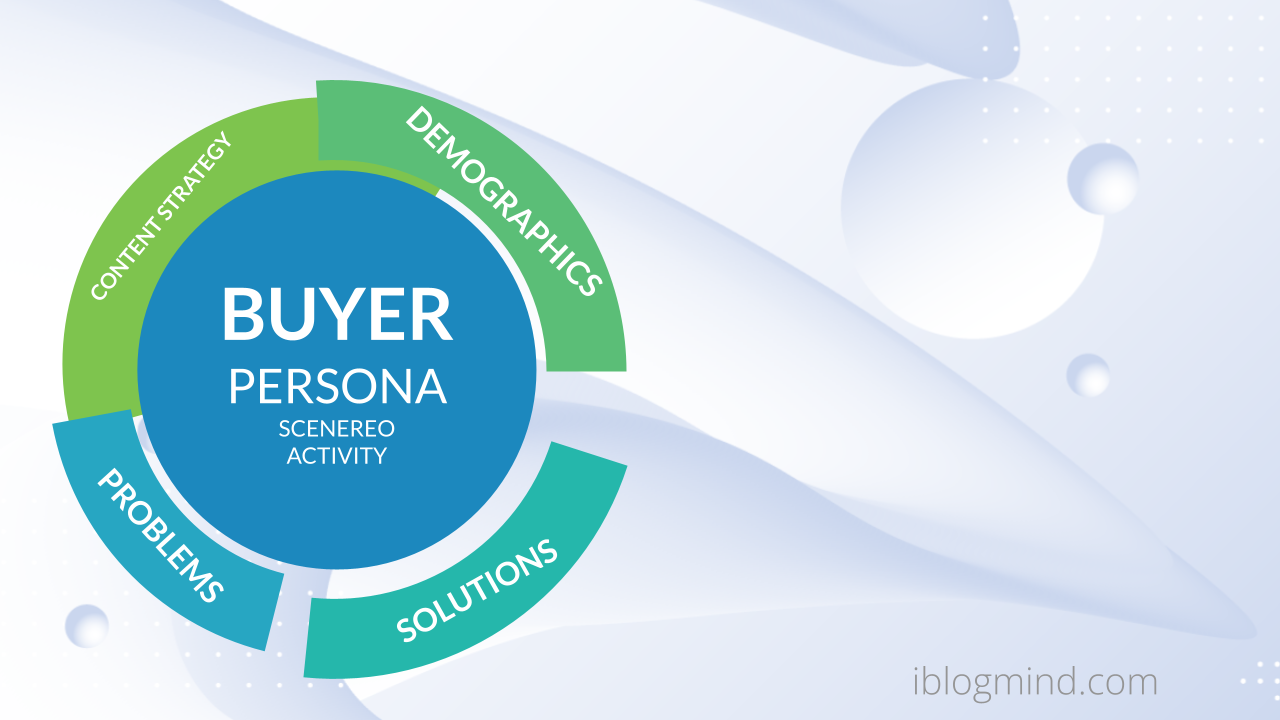
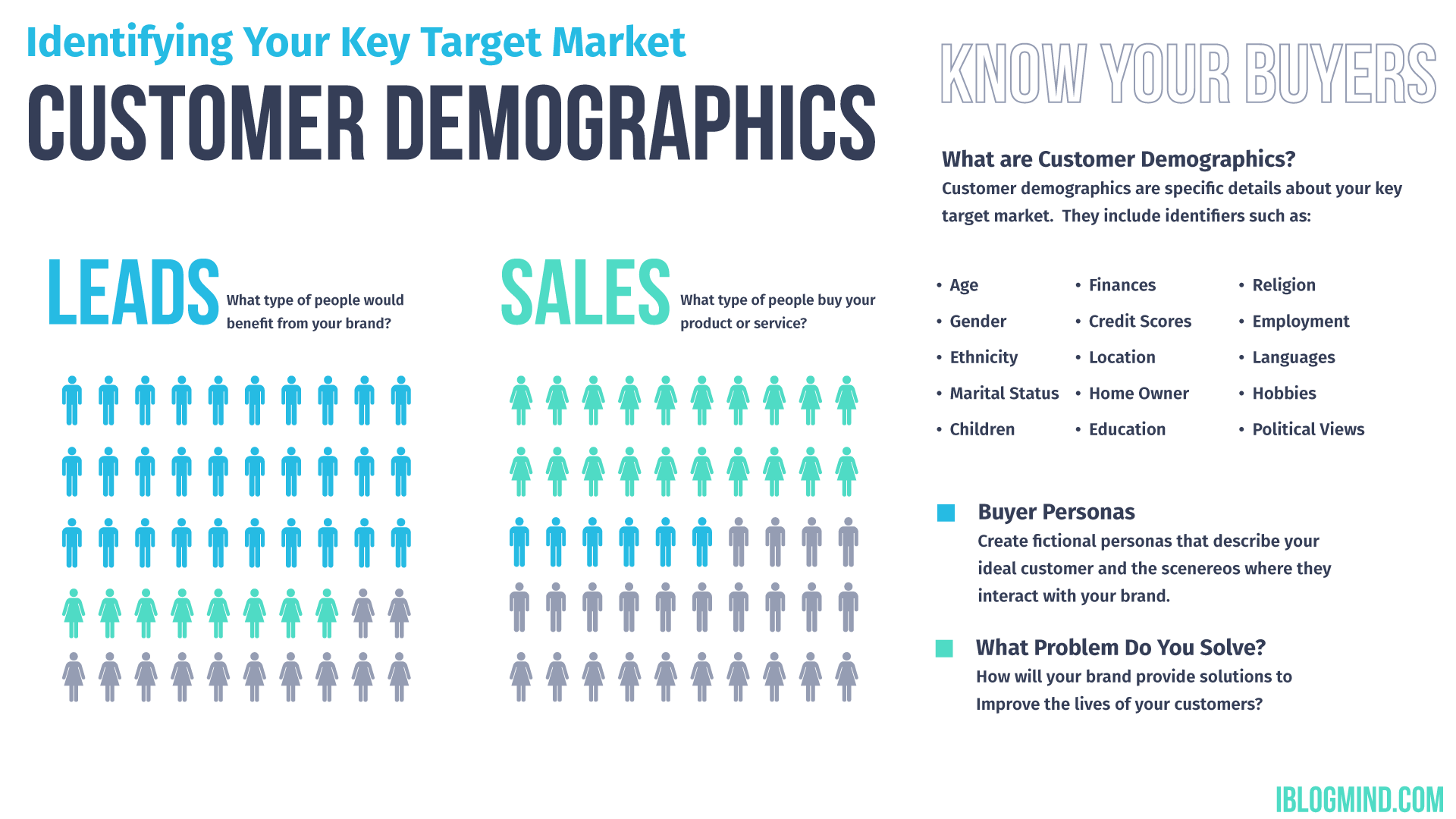
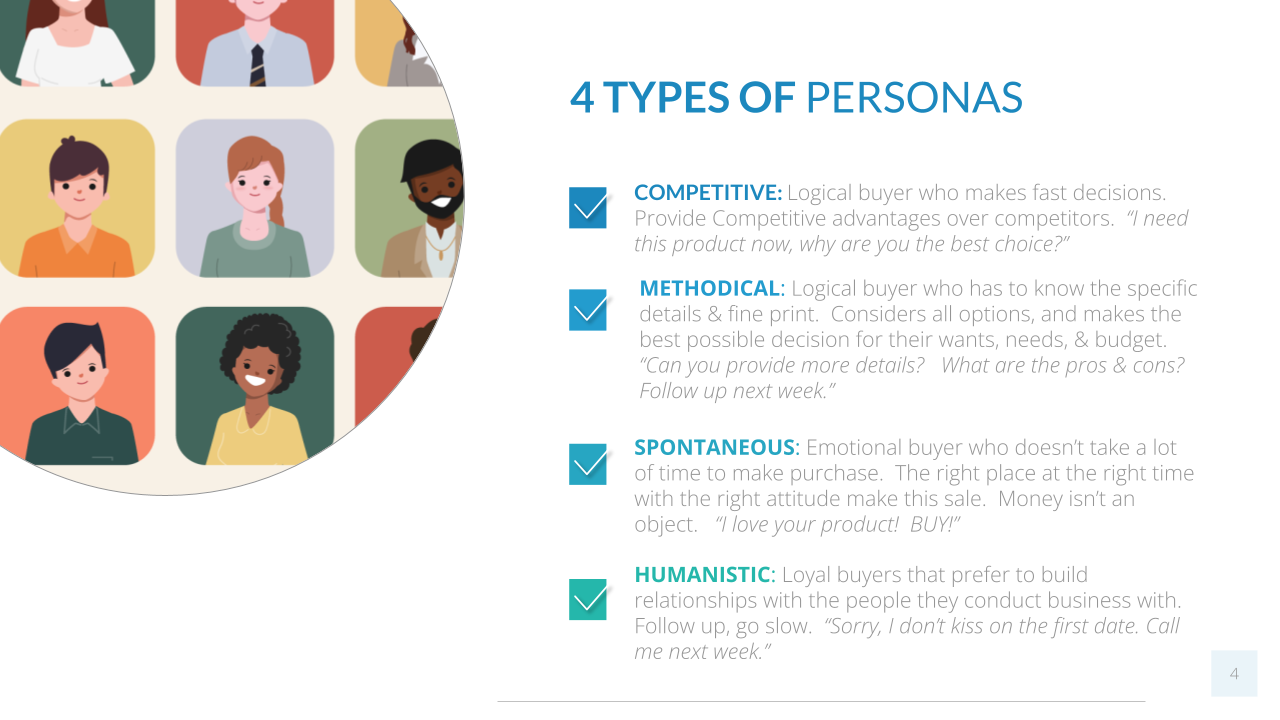

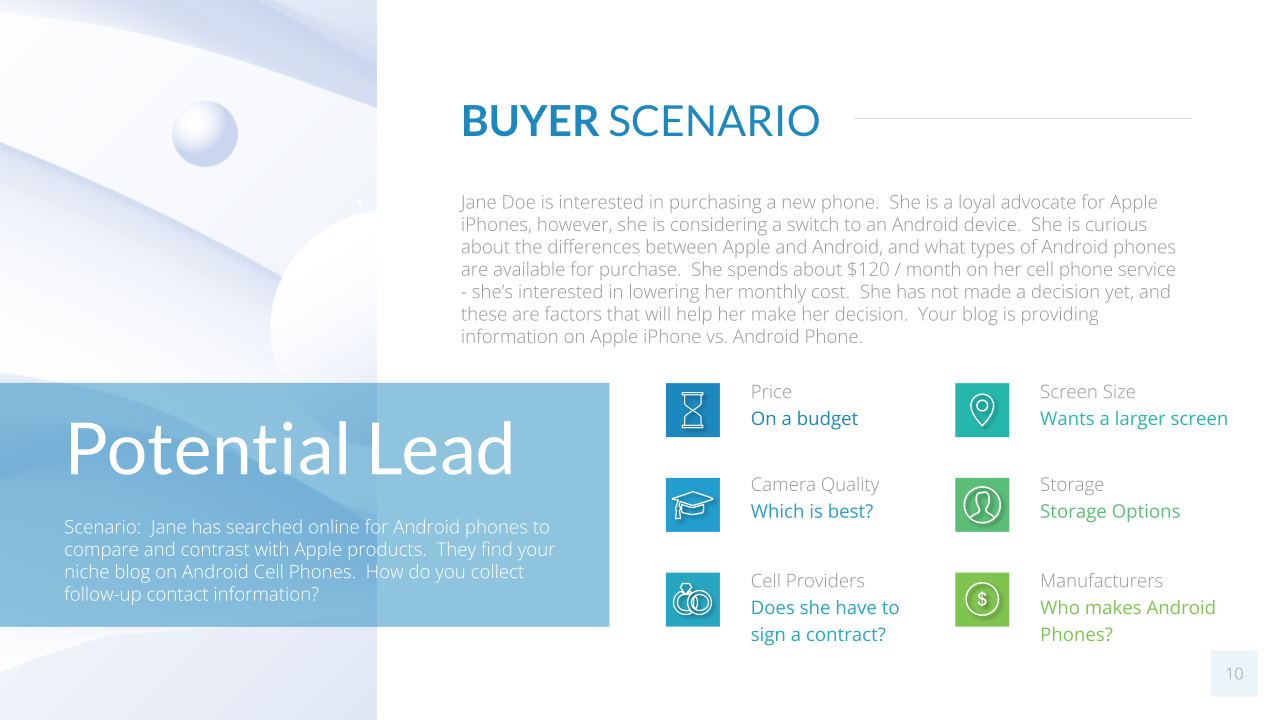
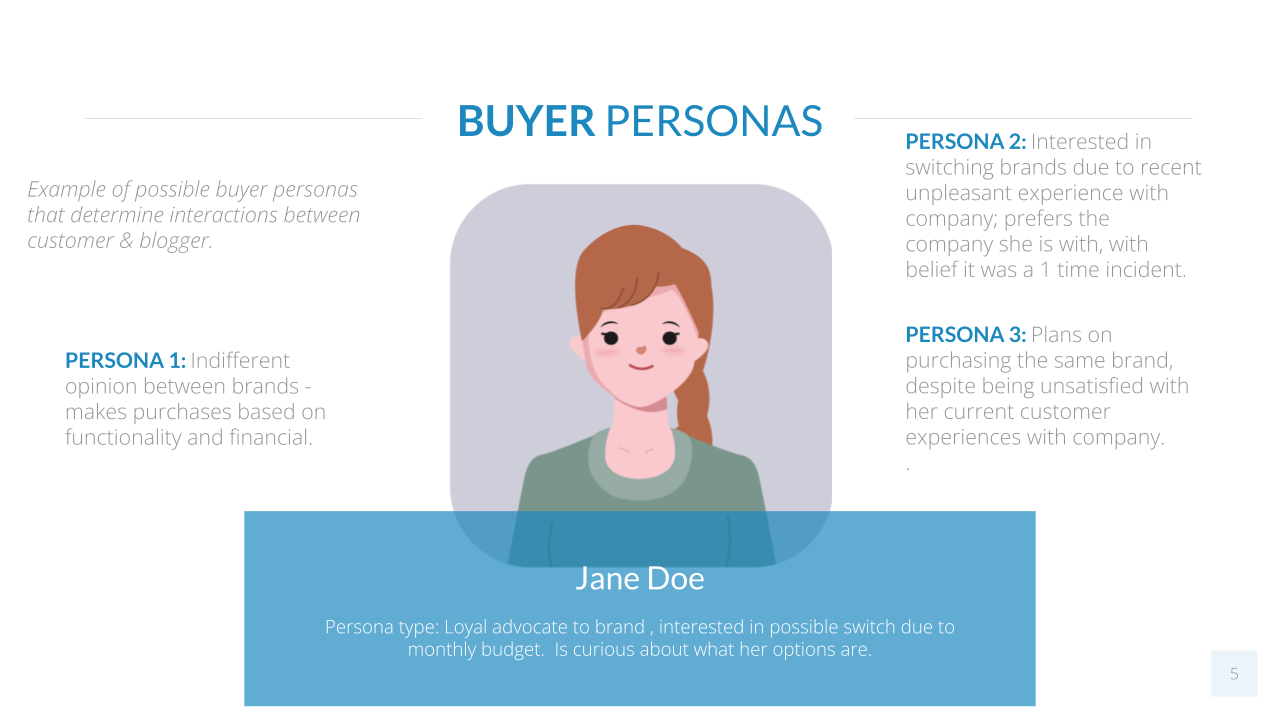
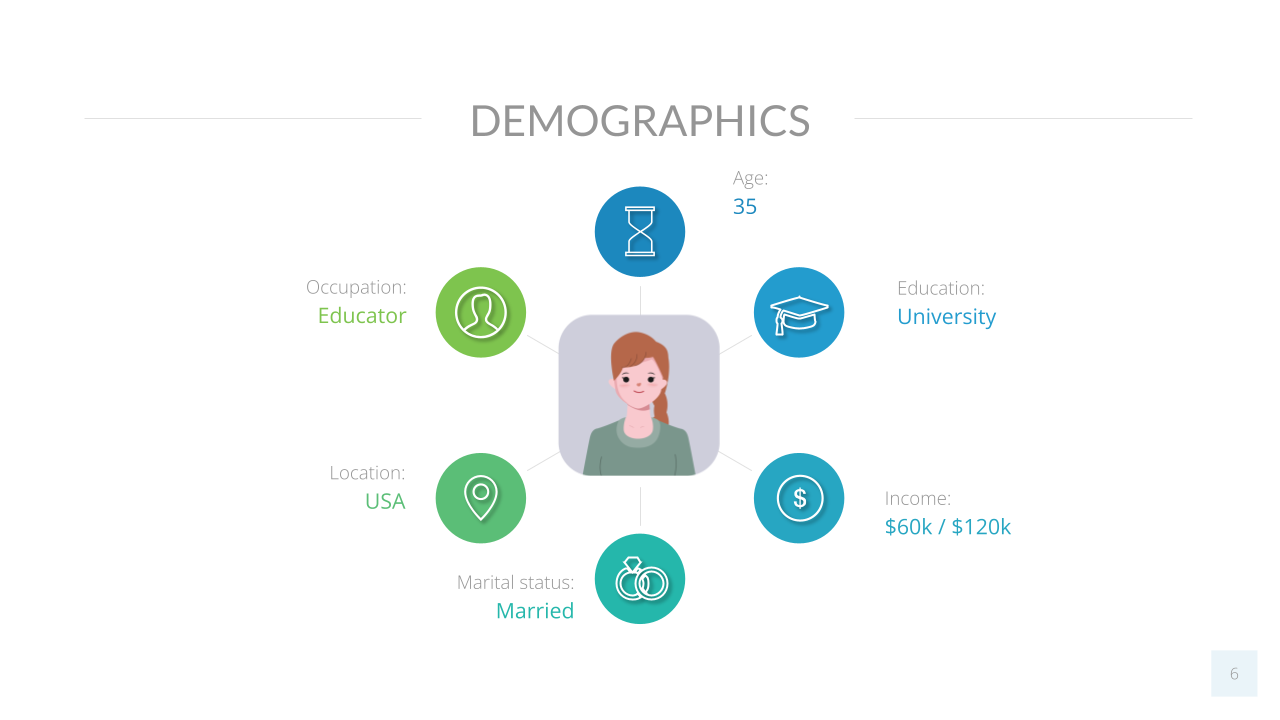
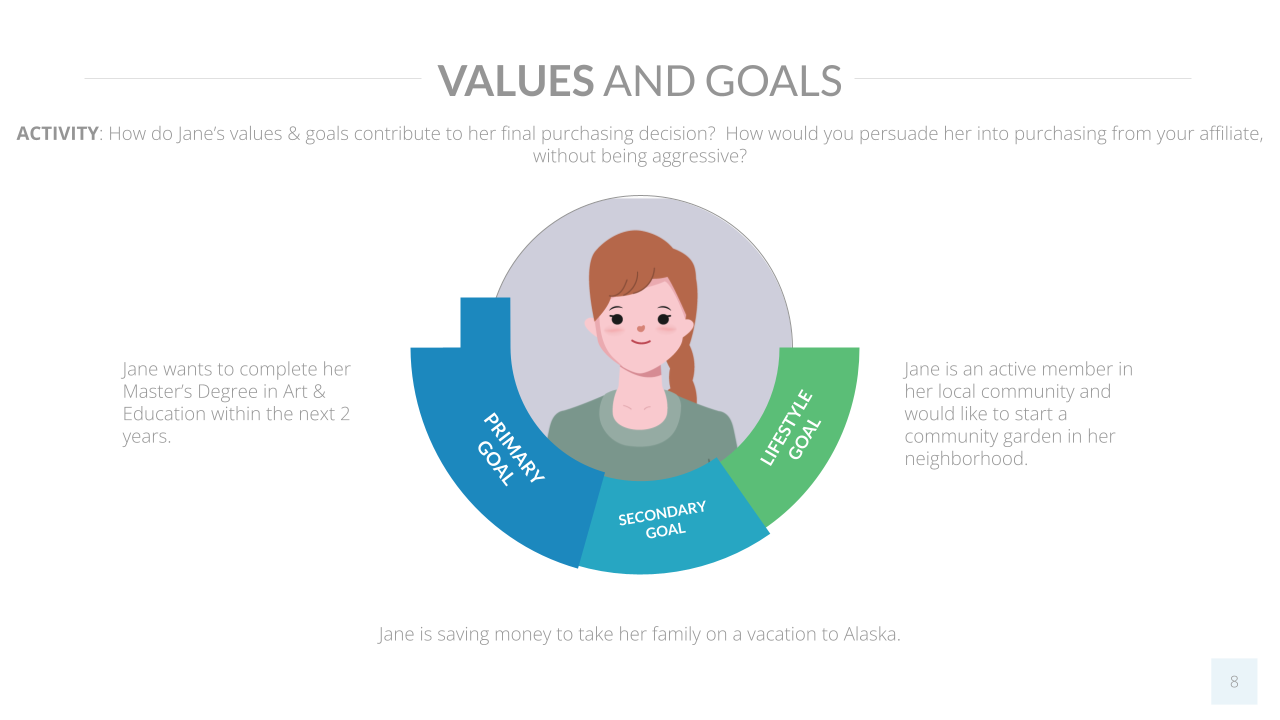
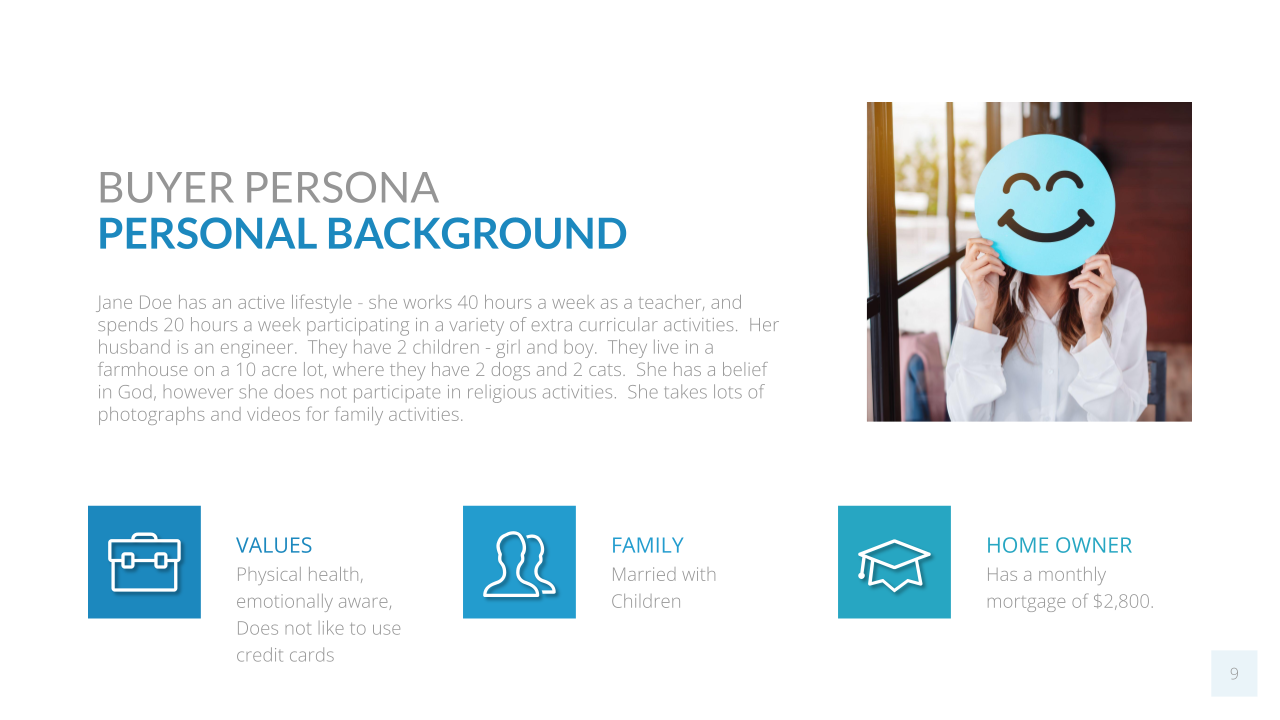


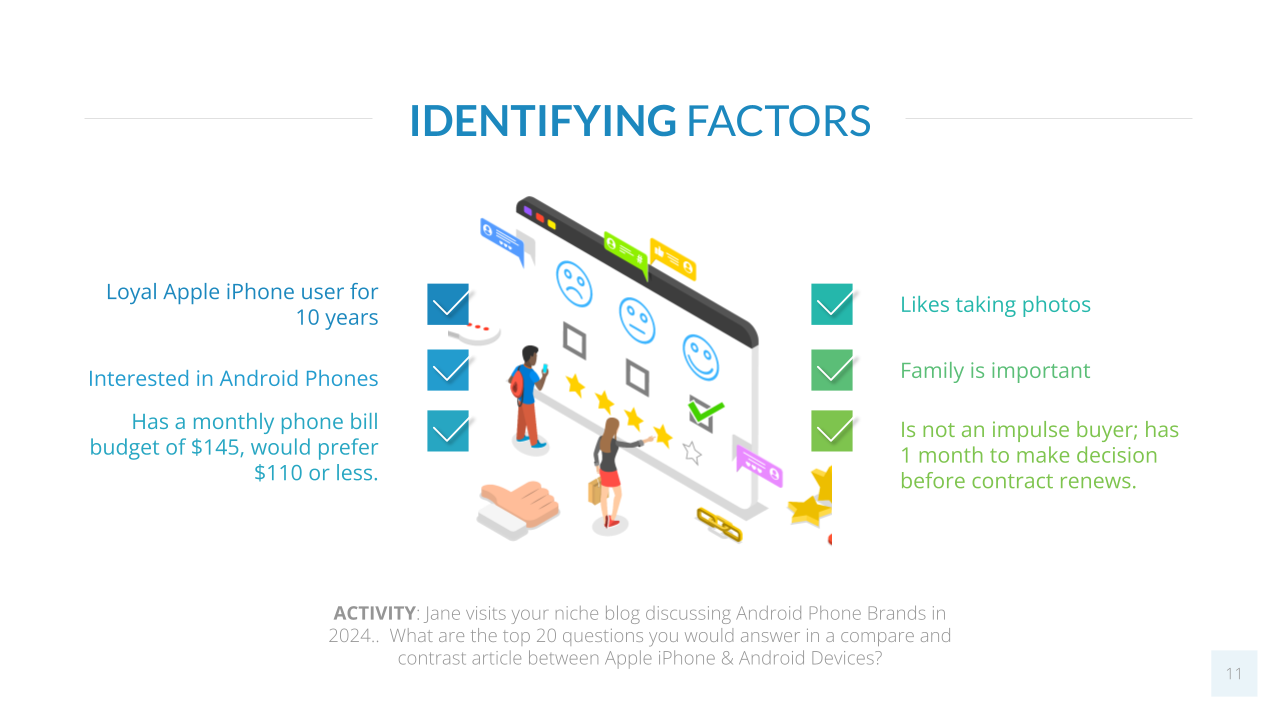
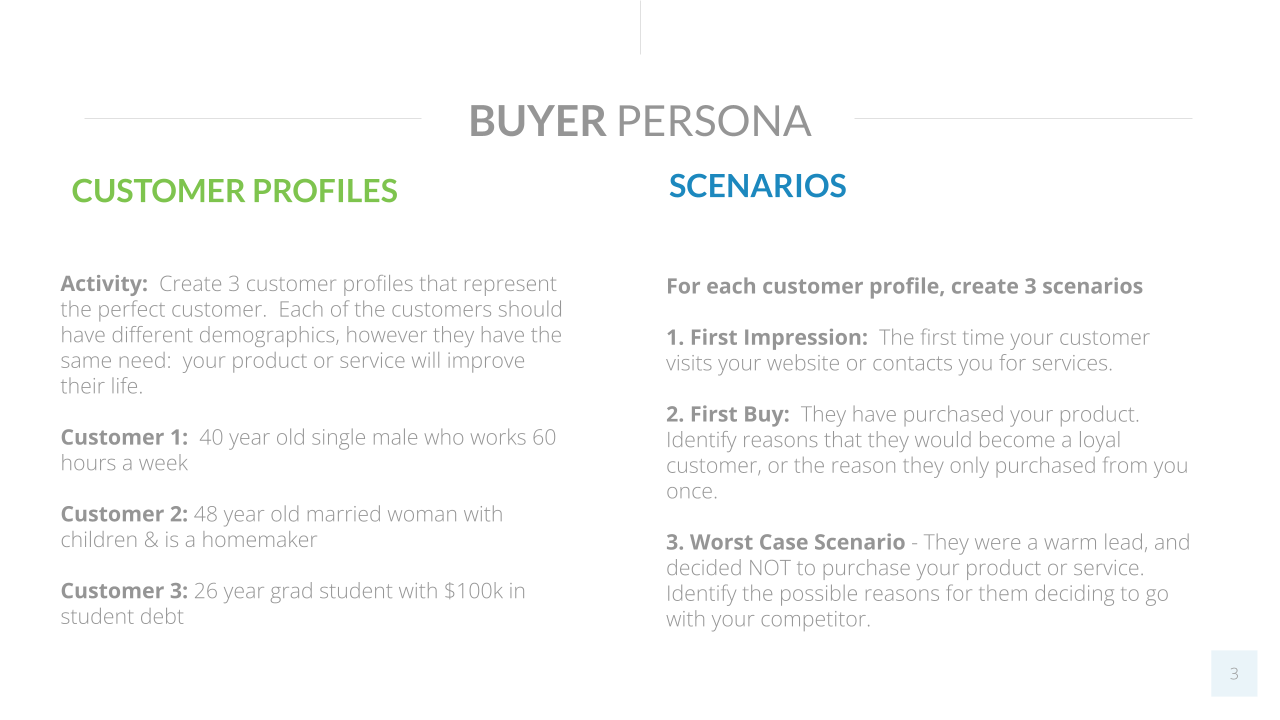
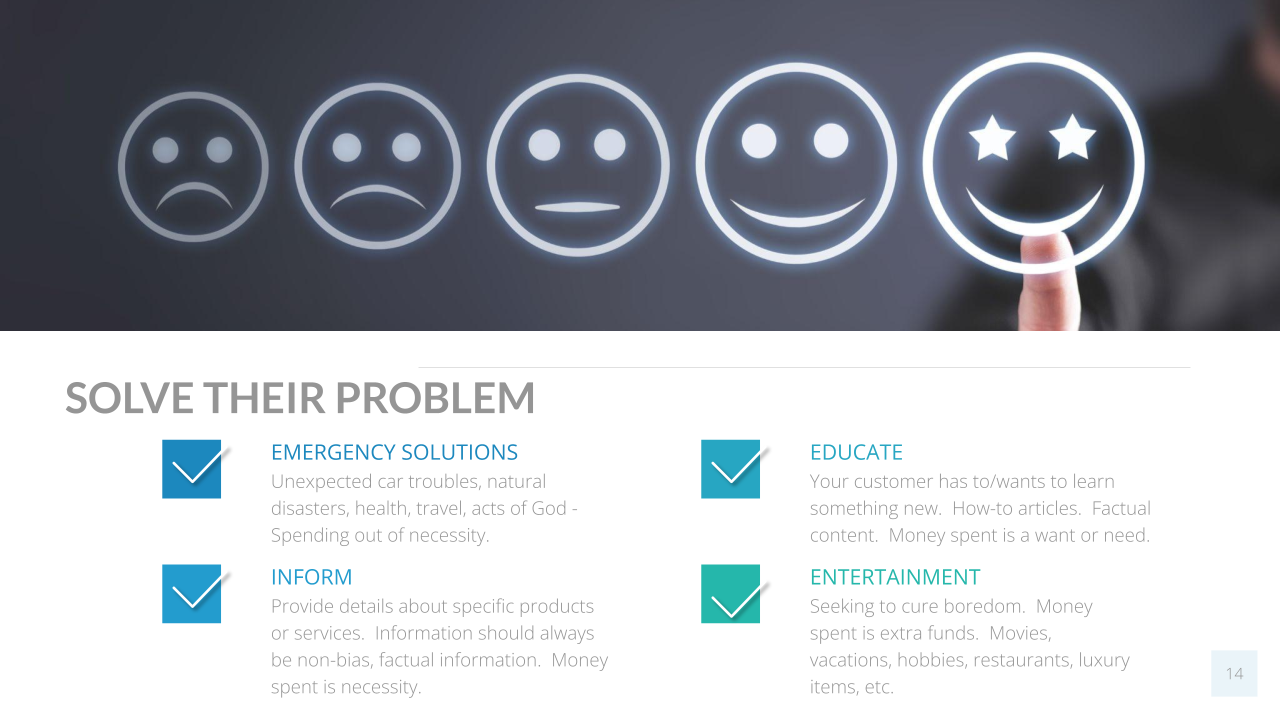
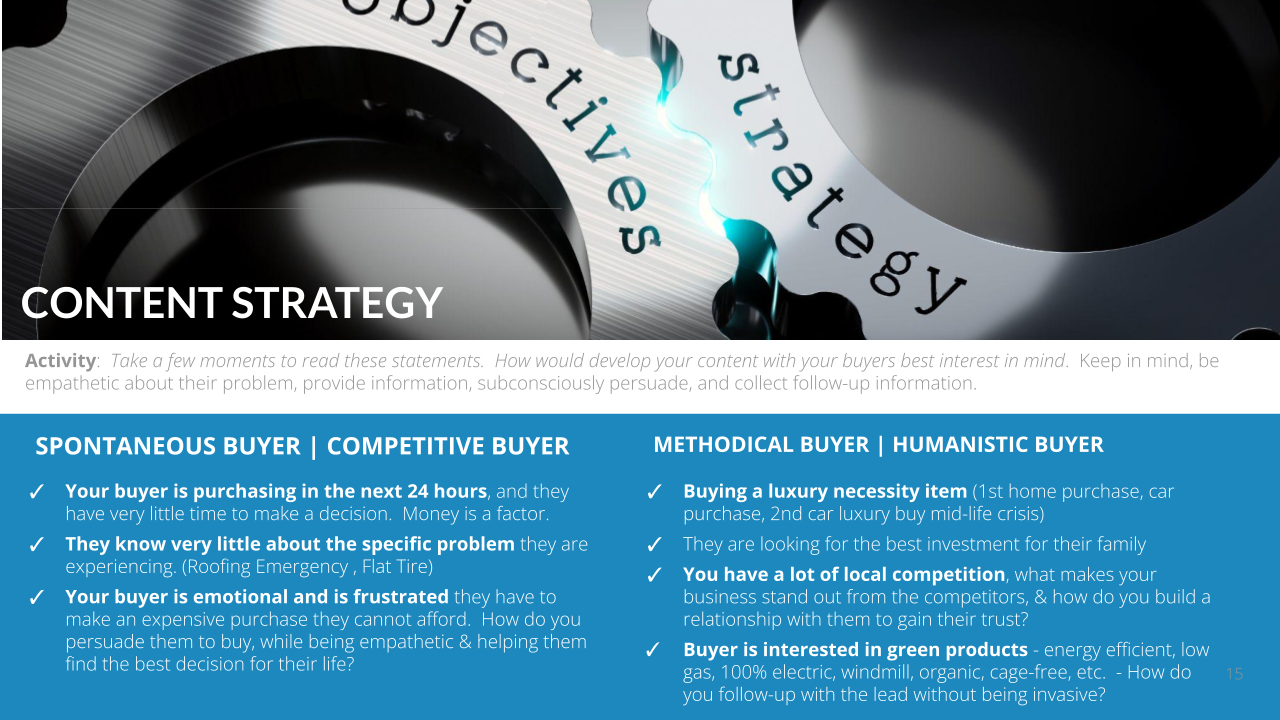
Key Target Market Demographics
Buyer Persona Personal Values & Scenarios
What is the main problem my target market is facing?
- What are the biggest issues, and how do you have the solution to their problem?
- How is the product or service I am offering solve your solution?
- How long will it take before the purchase begins to work?
What solution does my blog offer?
- How will your blog help your target market?
- Are you selling something?
- What are you selling?
- How will it help the buyer?
- Is it a physical product or service?
- How long will it take before the purchase begins to work?
- Is it a 1 time purchase?
- Why should the buyer purchase your product more than 1 time?
Competitors
- What are the largest companies in your Industry? How much revenue do they make annually?
- Who is the largest national competitor?
- Who are the largest local competitors?
Situational Analysis
What is a Situational Analysis?
The situational analysis is an understanding of your blog's main target market, direct & indirect competitors, business challenges, and our competitive differentiators. This section should describe your company’s strengths and weaknesses, as well as possible hidden opportunities and potential obstacles that can prevent us from achieving main business goals.
Direct Competitor Analysis
Indirect competitors may sell a similar product or service & target a different audience, or they may target the same customers with a slightly different product or service.
Indirect Competitor Analysis
Indirect competitors may sell a similar product or service & target a different audience, or they may target the same customers with a slightly different product or service.
Core Capabilities
Instructions: what are Core Capabilities? Core capabilities describe the knowledge, skills, strengths, and resources of a business that validates it's ability to accomplish a specific task. Simplified, the core capabilities are
Content Strategy
Content strategy is a plan of action with short-term and long-term content goals when it comes to making sales in Search Engine Content Marketing. Content strategy doesn’t cost a lot of money – however it does take time and effort to create a well developed content strategy.
- Calendar – Write down daily goals to achieving content development. You may choose to write down a weekly plan, monthly plan, and yearly plan.
- Set launch dates and deadlines to make your content writing a priority.
- Notebook – Get a notebook that you dedicate specifically to idea generation. Keep this notebook with you at all times – write down ideas as they come so you do not forget them.
- Brainstorming Session – Take about 30 minutes to write down as many ideas as possible focused around your niche blog content strategy. It doesn’t matter if they sound silly, write down everything.
- Write Daily– Writer’s Block comes from not writing. Even on days you don’t ‘feel like writing,’ it’s a good habit to spend a minimum of 30 minutes daily to keep the momentum. It’s easy to slip out of the habit, and before you know it, 6 months goes by and you haven’t created any new content.
- Search Engine Keyword Research Tool – Use Google Keyword Tools, SEO tools, and Google Adwords to locate the best buyer keywords and highly searched keywords. Write down all keywords with search results, and incorporate them into your content.
- Stock Photos – Lots of free stock photo sites exist, however, they usually require some type of credit given if you do not have a monthly subscription. I’d recommend purchasing your stock photos, either from an Unlimited download and license stock photo site such as ENVATO ELEMENTS. This prevents any copywriting headache and verifies that you’ve paid all royalties on the images.
- Stock Videos – People love watching videos. Multimedia is a great way people absorb information. I’d recommend creating several videos to use in your content. Envato Elements has great stock video. If you are not comfortable editing video, you can find content creators on sites like UpWork that will help you, and even work with you if you are on a limited budget.
- Infographics – Create attractive infographics for your content that breaks the monotony of content. Keep in mind – a lot of people will only be skimming through your content – provide them with easy to understand infographics with the information they seek. Adobe Stock has great infographics. You may wish to create high quality infographic vector images with Adobe Illustrator.
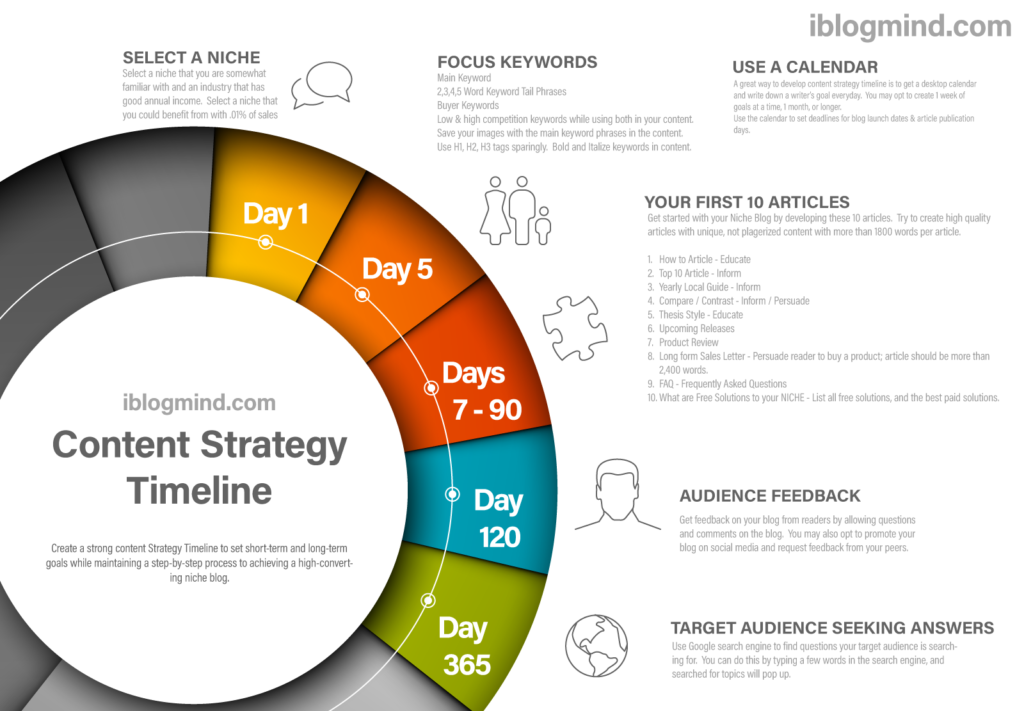
Keywords
What are keywords?
Keywords are words and phrases that are used to locate your website.
Keyword Competition
What is keyword competition?
Keyword competition is the amount of competition a specific word or phrase has –
The higher the competition, the more expensive it will be to purchase a pay per impression ad from Google or Bing.
The shorter the phrase, the higher the competition (in most circumstances).
I.e. the word “loan” is going to have extrememly high competition, since many businesses and corporations are fighting over the top space in search engines for the word “loan.”
The word “loan” has extremely high competition, because they have 500k monthly searches, and the cost per impression ranges from $36 – $72 per click. The reason being is because the word loan is going to be a high profit word. The higher the profit, the more competition, gneerally results in higher cost per click.
If you break that down and do something more like: ‘ home loan, ‘ the competition is still going to be high, however now you are being more specific. Small companies are going to have a really diffucult time winning the keyword ‘loan,’ since they cannot compete with larger banks for the space due to budget restrictions.
Break that down even further
home loan in northern florida – now you’ve gotten more specific , the competition isn’t going to be quiet as high, and real estate agents will be fighting over this, however it’s not going to be the $80 cost per click
– another thing to remember when doing cost per click – even though you have a cost per click, this doesn’t mean that every click that is generated is going to result in a sale. That is why it is critical during the first few months of a PPC campagin to audit and watch the traffic. This is where a lot of people mess up on their budget – they don’t watch the analytics and they just through $10k at the advertisers expecting it to generate revenue. Throwing 10k at the screen is great – if you can afford it – however it’s pointless if the cost per click ends up draining your funds.
Another thing about PPC campaigns is that there are shady companies out there that will drain your budget. You have to keep an eye on this. There are tools that will help you, however it’s something you have to monitor. Don’t just set up a PPC campaign without looking at the analytics monthly. (i’d recommend looking as often as possible and tweaking when necessary)
The goal of your PPC campagin is to maximize your sales per click – and to maximize ROI –
in order to do that, you have to remove negative keywords, eliminate overpaid keywords (i.e. – don’t pay for the word ‘loan’ if it’s an $80 cost per click, and it takes 10 visits to make a sale, and you only make $500 per sale – if that is the case, you just paid $300 to make $500. Ideally, you want to pay $1 to make at least $2 (bare minimum, which, in my personal opinion, is still too high, however, that is only something you can decide, based on your industry.) If you can spend $1 and make $10, keep going. You found a super secret recipe and shouldn’t share with your competitors.
- Google Adsense: Cost Per Impression
- What is the estimated ROI on every $100 spent?
- Bing Ads: Cost Per Impression
- What is the estimated ROI on every $100 spent?
- If the ROI is negative per every $100 due to low clickthrough rate, focus on longtail phrases. What are other phrases that can be focused on?
High Competition Keyword Analysis
High competition keywords have more people using that particular keyword phrase – these keywords may have a larger market, and high competition keywords have a higher payout value.
Buyer Keywords
Buyer keywords are words that are used when people are looking to purchase something.
- Compare ‘item’
- Discount
- Buy
Negative Keywords
- Negative keywords are words used when purchasing ads, and you want to exclude your product from those search results (when you are spending money towards traffic , PPC, PPI)
- These words are specific based on your particular industry.
